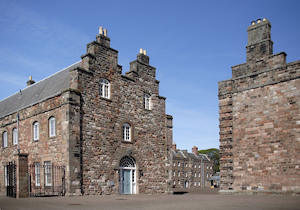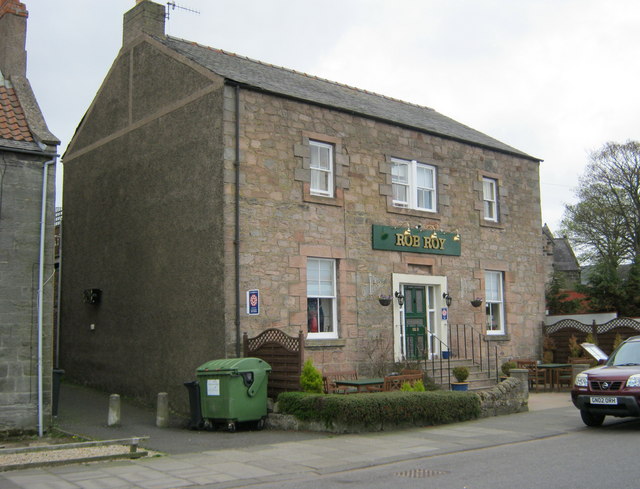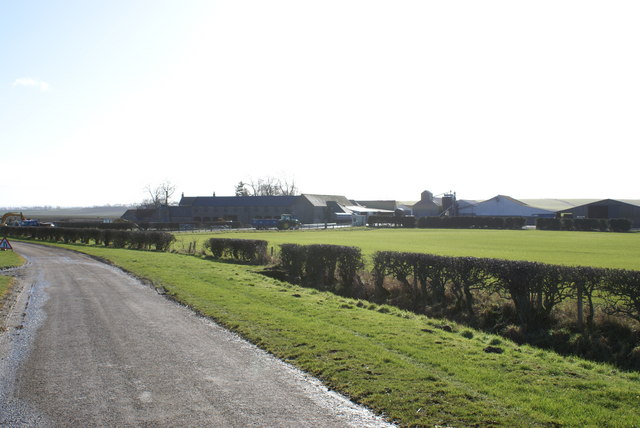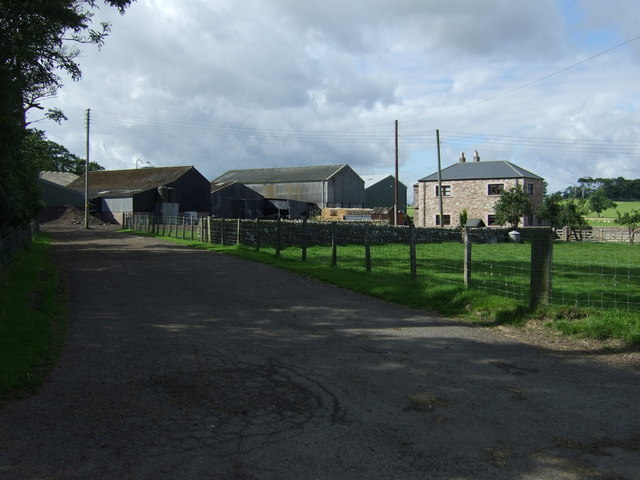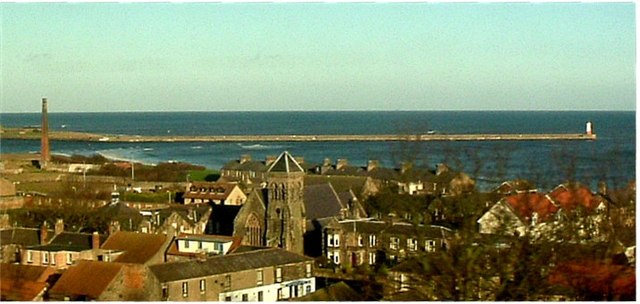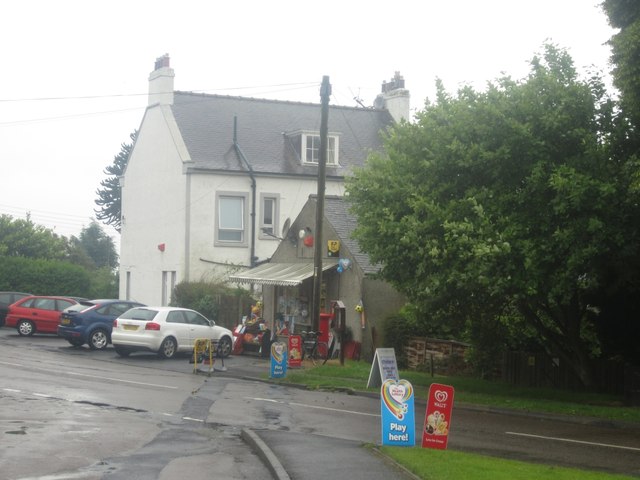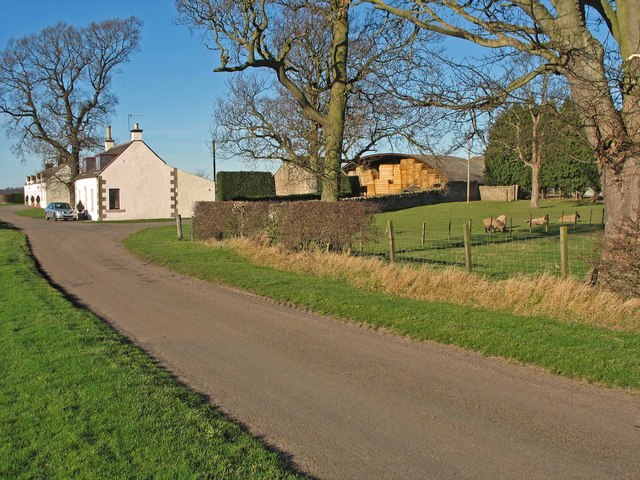Topics > Northumberland > Berwick upon Tweed > Tweedmouth > Tweedmouth Chapelry, 1855
Tweedmouth Chapelry, 1855
Extract from: History, Topography, and Directory of Northumberland...Whellan, William, & Co, 1855.
TWEEDMOUTH PAROCHIAL CHAPELRY
TWEEDMOUTH, a parochial chapelry, situated at the northern extremity of Islandshire, comprises the townships of Ord, Spittal, and Tweedmouth, whose united area is 5,140 acres. Population in 1801, 3,458; in 1811, 3,917; in 1821, 4,673; in 1831, 4,971; in 1841, 5,202; and in 1851, 5,714 souls.
ORD is a township and village, the principal landowners of which are John Grey, Esq.; Mrs. Isabella Grey; James Grieve, Esq.; P. J. Selby, Esq.; and several others. The area of the township is 256 acres. The population previous to 1841, was returned with the chapelry; in that year it was 997, and in 1851, 914 souls. THE VILLAGE of Ord, or East Ord, is situated one mile south-west of Tweedmouth, and was for many generations the property of a family which assumed the local name, from whom it passed to the Darlingtons, and Langtons. Many remains of antiquity have been discovered at various times in this neighbourhood. ORD HOUSE, the residence of James Grieve, Esq., is situated east of the village. ORD (MIDDLE) is a farm one mile and a half south-west of Tweedmouth. ORD (WEST) is a hamlet and two farms, on the south bank of Tweed, two and a half miles west by south of Tweedmouth.
Directory:
|
Balmer William, vict. Salmon Inn, East Ord Borrell Mr. George, Unthank Cottage Carr & Co. bone dust and patent flooring manufacturers, East Ord Dodds Emanuel, blacksmith, Murton Edmeson Mr, Robert, East Ord Grieve James, Esq., Ord House Grey Mrs. Isabella, Middle Ord House Home Alexander, schoolmaster, East Ord Logan Thomas cartwright, East Ord Lilly James, shopkeeper, East Ord Lindsay Mr, Henry, Ord. Cottage Linsay James, M.D., East Ord Rule Thomas, blacksmith, East Ord Stevenson Mr. William, East Ord Wilkie William, gardener, Ord Field Tait Thomas, steward, South Ord Farm |
Watson Mr. Ralph, Unthank Wood John, vict. White House, Murton
Farmers Balmer William, East Ord Barclay John, East Ord Bell Adam, East Ord Burn John, Middle Ord Johnson Mrs. P., South Ord and Billy Law Laing John, Unthank; ho. Cornhill Makins Richard, Murton Murray John, sen. West Ord Nesbit Thos. East Ord and Spring Hill Robinson George, Ord Mains; ho. Berwick Smith John, Hive Acres Smith William, Prior House |
SPITTAL is a township and village, the property of William Dickson, Esq.; Mrs. Fair, Berwick; Mr. Robert Yellowly; and several smaller proprietors. The township contains 244 acres, and the number of inhabitants in 1841, was 1,631; and in 1851, 1,736 souls. THE VILLAGE of Spittal is situated about three quarters of a mile south-east of Berwick, close to the sea shore, and forms an irregular cluster of houses of all sizes and shapes; the better sort having sprung lately into existence, in consequence of its rising importance as a bathing place. The name of this village is evidently derived from the word hospital, and it is probable, that the hospital for lepers, founded here by Edward I., was the origin of the. present Spittal. The site of this institution is now entirely forgotten. The inhabitants are, with a few exceptions, fishermen and pitmen. Herring-houses abound here, and we may form some idea of the importance of this branch of industry from the large number of herring boats which are drawn upon the beach. At the south end of the village, there is a fine mineral spring, called the Spa, which only requires to be better known, in order that its virtues may be appreciated. Spittal, like Tweedmouth, has its salmon feast, which is held here in September. The Mayor and Burgesses of Berwick are lords of the manor of Tweedmouth and Spittal, having purchased the royalties of the Earl of Suffolk, in 1657, for the sum of £570. Here is a UNITED PRESBYTERIAN CHAPEL, a neat and commodious structure, capable of accommodating about 650 persons. Rev. William Porteous, minister. There is also a SUBSCRIPTION SCHOOL, supported, as its name denotes, principally by subscriptions, and attended by about 100 pupils. James Kirton, teacher. The baths here are much frequented by parties visiting Spittal during the summer months, and being situated near the sea, fresh water is pumped up every tide. (For Directory see Berwick.)
TWEEDMOUTH, a township and village in the chapelry o£ the same name, is the property of William Dickson, Esq.; Mrs. Sarah Mary Forster; James Grieve, Esq.; the Corporation of Berwick; John Laing, Esq.; Messrs. Ramsey; Mrs. Margaret Robertson; Robert Smith, Esq. the Tweedmouth Brewery Company; and others. The township contains an area of 2,328 acres; its population in 1841, was 2,574; and in 1851, 3,054 souls. THE VILLAGE of Tweedmouth, the southern suburb of Berwick, is situated at the south end of Berwick Bridge. With regard to its origin we possess no positive information; but we find that in 1203, King John attempted to erect and fortify a, castle here, but he met with many obstructions from William the Lion, King of Scotland, who twice interrupted the work, and finally demolished it. In the year 1277, the English and Scotch commissioners assembled at Tweedmouth, in order to settle a dispute respecting the boundaries of the two kingdoms. It was here that the English monarchs and their armies encamped on the several occasions that they attacked Berwick.
About a century ago Tweedmouth consisted of a long and irregular street of houses, and all the high ground between the village and the south and west was a common. In the course of years this common was divided and planted, and is now excellent land, well drained and fenced; every freeholder and copyholder have shares to the value of three or four years rent, advancing their property to twice its former value. In the neighbourhood of the Railway, the quarries and coal-pits have considerably advanced, and from the increased value of the land within these few years, the farms in the vicinity of the village rank in value and product with any in the neighbourhood. There are a couple of foundries in Tweedmouth, two or three shipyards, and a few engineering establishments. A number of herring-houses on a large scale have been erected here. From having been a small fishing village, Tweedmouth has recently sprung up into an important railway station, on the line between York, Newcastle, and Scotland. The inhabitants of the village are mostly fishermen and labourers. At the east end of Tweedmouth is St. Cuthbert's well, a fine spring of water, in which it is said, the Patron of the north, baptised several of our pagan ancestors. The Tweedmouth fisheries below the bridge are far more valuable than those of Berwick, though lately they have much decreased in value. There is an annual feast held here on the second Monday of July (old style), when the inhabitants entertain their friends with baked salmon and other delicacies, after partaking of which the day is spent in mirth and jollity. Boat races, quoiting, and dancing, are much indulged in on these occasions.
THE CHURCH, or CHAPEL, dedicated to St. Bartholomew, is a modest and unpretending little structure, situated in the neighbourhood of the river; the date of its erection is unknown, but it underwent a thorough renovation in 1780. It was also enlarged in 1841, by which means 168 additional sittings were obtained, the whole of which are free and unappropriated. In its small burial ground repose John Mackay Wilson, Berwick's only poet, and James Stuart, who lived to the patriarchal age of 115 years. The living is a perpetual curacy in the archdeaconry of Lindisfarne, and deanery of Norham, certified at£ 15; returned at £76; gross income £150; the patronage is vested in the Dean and Chapter of Durham, and the Rev. John Leach is incumbent. Here is a Scotch Presbyterian Chapel, erected in 1783, Edward B. Roger, minister. There is also an English Presbyterian Chapel, a good stone building, erected in 1845, at a cost of about £1,000, which was raised by subscription. It will accommodate 400 persons; Rev. Andrew Cant, minister. The Church School is a large establishment supported by subscriptions, and attended by 100 children. Thomas Banner, teacher. The Presbyterians (English) have a commodious school, which is attended by about l00 pupils, Alexander Dewar, teacher. (For Directory see Berwick.)


